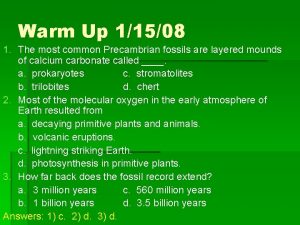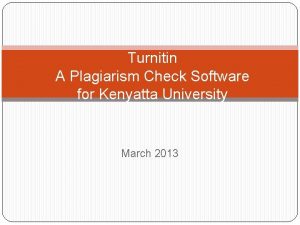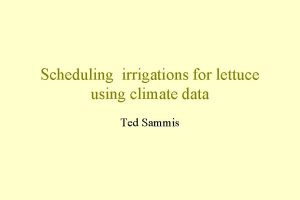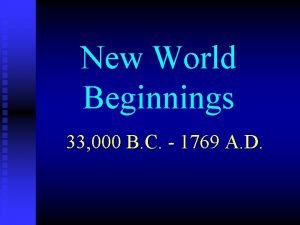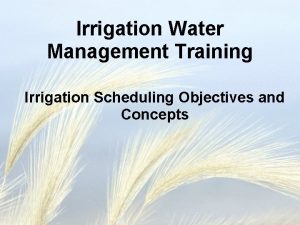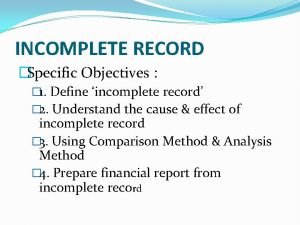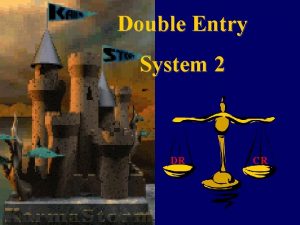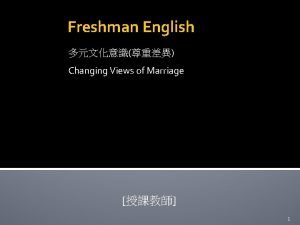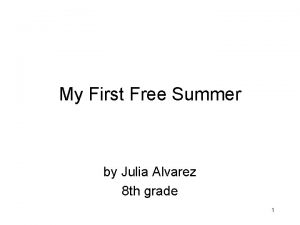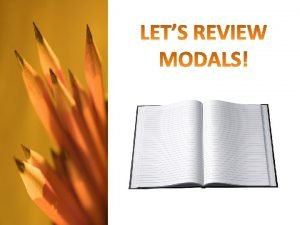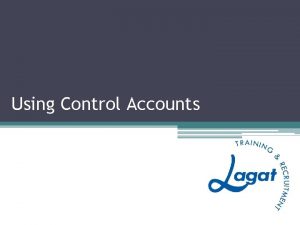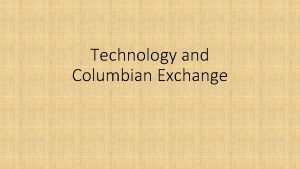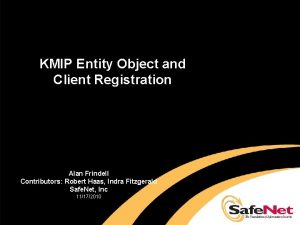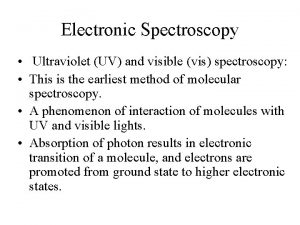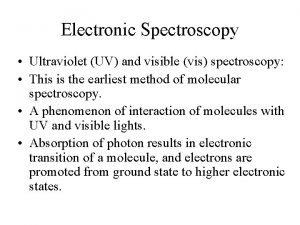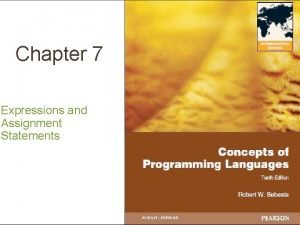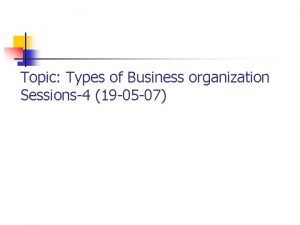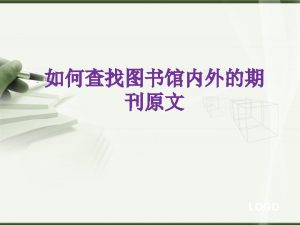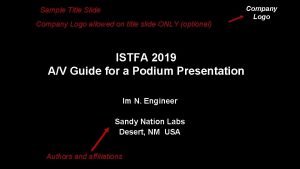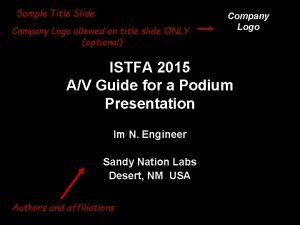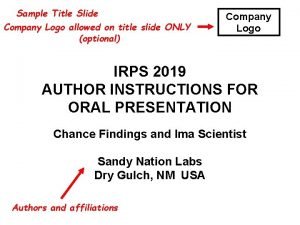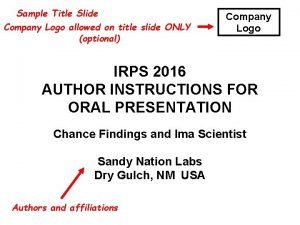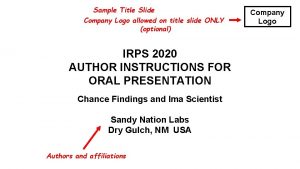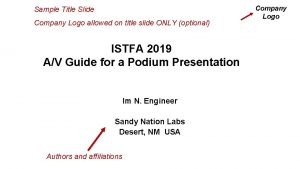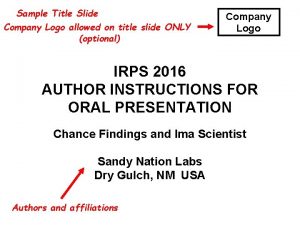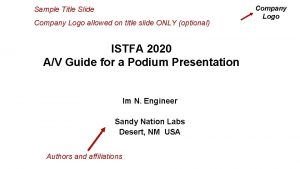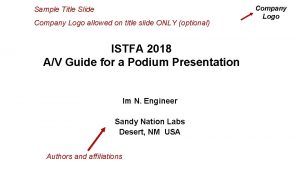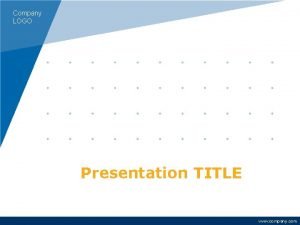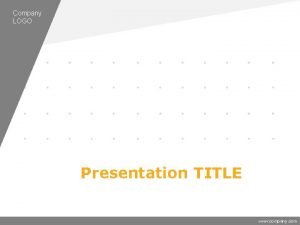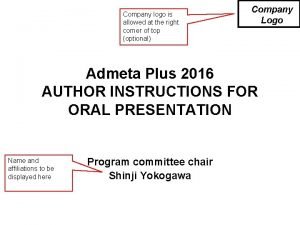Sample Title Slide Company Logo allowed on title



























- Slides: 27

Sample Title Slide Company Logo allowed on title slide ONLY (optional) ISTFA 2018 A/V Guide for a Podium Presentation Im N. Engineer Sandy Nation Labs Desert, NM USA Authors and affiliations Company Logo

Outline Sample Outline Slide (required) • Introduction • Page Layout • Slide/Text Formatting – Good example – Bad example • • • Preparing Figures Animation/Video Presentation Review Processes Exceptions/Revisions Conclusions Appendices – Ideas for reducing the file size – Using the “Presenter View” 2

Introduction / Background / Purpose / Objective Sample Introduction Slide (Required) • Review the standards first for preparing presentation visuals for ISTFA • Use the sample Power. Point file as a template for creating your presentation Use Bold Bright text on Dark background. Minimum font size is 20 pt. Arial, Helvetica and Symbol US default fonts RECOMMENDED. Use of other fonts at your own risk. If the text is not legible, ISTFA A/V Chair reserves the right to reject/modify the presentation. Page numbers in lower right corner Starting on page 2 3

Introduction: Electronic Presentation at ISTFA • Software to use: – Microsoft Power. Point version 2013 and earlier – Motion effects or transitions can be used for clearly showing data only • Do not use transitions gratuitously • Can be distracting to the audience – The AV committee determines if motion effects and transitions are excessive Minimum font size is 20 pt. 4

Page Layout • File Page Setup: – Slides sized for On-screen Show – Landscape mode – Aspect ratio 16: 9 • Maximum of 20 slides – Unless authorized by session chair • Page number at lower right • Four required slides: – Title, Outline, Introduction/Background, Conclusions • No slide transitions or “custom animation" (motion effects) – Unless clearly beneficial to technical communication, e. g. figure overlays Page numbers in lower right corner 5

Slide/Text Formatting • Arial, Helvetica or Symbol fonts are easy to read – Math and Greek symbols are found in the Symbol font • Bold font, minimum of 20 pt for all body texts – For figure captions, legends, axis labels etc. , minimum size of 18 pt is acceptable if space is limited • Black or high-contrast color text on white (clear) background, or white/high-contrast text on dark background – Use color text carefully (View next 2 slides in viewer mode for examples) 6

Example – Good Slide Formatting (high contrast text & background combination) • Text is written in Arial, Helvetica or Symbol fonts Q = 90 o l = 1064 nm • Bold font, minimum of 20 pt for all body texts – For figure captions, legends, axis labels etc. , minimum size of 18 pt is acceptable if space is limited • Black or high-contrast color text on white/light background or white/light text on dark background – Use color text carefully (Good imported graph, line width and font size are visible) 7

Example – Bad Slide Formatting • (low contrast text & background combination) Small font size is hard to read across a crowded room – • • • No bold makes lines thin and difficult to read (not everyone in the audience wears glasses) Note Bullet Transitions Can Be Distracting (Poor imported schematic, line width and font size not visible, text is to small) • This slide has too much information and too many colors on it making it difficult to read causing the audience to focus on what you have written on your slide versus what you are communicating. The audience would like to hear what you have to say instead of struggling to read it on your slide. A slide with this much information and/or bullets on it should be broken into 2 slides and made easier to read and convey data for the audience. The above schematic would be better broken into 2 pieces to demonstrate the key points of the layout. Bullet transitions if technically relevant should not be distracting. Color blind people can not distinguish between red & green. 8

Preparing Figures Imported curves must be thick and clear Imported text must conform to text guidelines The lines should be at least 3 point 9

Preparing Figures Imported images must be clearly labeled 2 1 Current Controlled Oscillator (ICO) 3 Heater AC INV. to Stress 4 2 NMOS Stress 4 3 1 Temp. Sense 10

Preparing Figures • Figures must be large and easy to read • Figures must take up at least 25% of the slide • Labeling within a figure must comply with presentation font guidelines (18 pt minimum) An example of a properly sized figure 11

Preparing Figures • Text in figures must be considered carefully • The example at the right is illegible • The figure itself is too small and of little value to audience members An example of a poorly sized figure, if you expect the audience to read data in the figure 12

Animation/Video • Animation/Video can be used for clearly conveying technical information – Animation and Video will be approved by the A/V chair based on the importance for conveying technical content • Animation/Video used must be compatible with Power. Point – Cannot exit presentation to play animation/video • Embedding the video files into a presentation is preferred • If it is not possible to embed the video files in the presentation, the video file should send with the presentation for easy linking • . mpg or. avi format only 13

Presentation Review Processes • Presentation slides will go through two steps of review in Confex • The first review will be done by assigned mentor(s)/session chair/co-chair. This review will focus on technical contents and A/V formats too • If revision required, mentors will send the presentations to the bucket of Revisions Required • If technical content is approved, session chair/co-chair will send the presentation to the bucket of A/V Review only 14

Presentation Review Processes • Then A/V chairs will review the A/V formats of the presentation again • If A/V formats are not satisfactory, A/V chairs will send the presentation to the bucket of A/V format change required • Authors make A/V format changes accordingly and send the presentation to the bucket of A/V format change Uploads • A/V chairs review the presentations in the bucket of A/V format change Uploads again and send to final approved if satisfactory 15

Exceptions/Revisions • Exceptions to the A/V Standards must be approved by the A/V Chair IN ADVANCE – The standards are meant to ensure high quality presentations that can be seen by everyone attending, not restrict technical expression – Send questions to your paper mentor, session chair or the A/V chair • NO CORRECTIONS to the presentation files will be allowed after the presentation has been accepted • NO CORRECTIONS to the presentation files are possible at ISTFA 16

Conclusions Sample Conclusions Slide (required) • When preparing your ISTFA Power. Point presentation, follow the A/V Standards from the start • Remember: Corrections to the slides will NOT be possible at the Symposium • Ask questions early in the process to avoid complications. Contact your session chairs for questions • We are here to help you make a great presentation. Thank you for your participation and see you at ISTFA 2018 17

Appendices 18

Reducing the File Size of your Presentation • Smaller file size helps in faster upload and download • MS Power. Point has options to help you 1. Delete picture editing data 2. Compress figures • There are general options entries – Not recommended • The options also become accessible when you save the presentation 19

Reducing the File Size • • In the ‘File’ Menu, select ‘Save As’ Pull down ‘Tools’ (1), then select ‘Compress Pictures’ Select 150 dpi or 96 dpi. Double check that the presentation quality is still acceptable to you (1) 20

Reducing the File Size (cont. ) • In the ‘Tools’ pull down from the previous slide, use ‘Save Options’, then select the ‘Advanced’ option • Find the ‘Image Size and Quality’ section Select “Discard editing data” 21

Using the Presenter View • “Presenter View” is a feature of MS Power. Point • It allows 2 different views of the same slide set – One for the presenter – One for the audience • Note: All subsequent explanations and screen shots are using Power. Point Version 2010 22

Using the Presenter View • Among other data, the presenter can – see all slide notes – see the several of the upcoming slides – see the time – easily go forward and backward to any chosen slide • More details at Microsoft: http: //office. microsoft. com/en-us/powerpoint-help/what-is-presenter-view-HA 010360603. aspx 23

Taking Advantage of the Presenter View • First, gain access to the notes panel • In case your window looks like the left one, click on View (1), then Normal (2) • Your window should now look like the on the right (2) (1) 24

Taking Advantage of the Presenter View • Then add notes to each slide Add notes here 25

Using the Presenter View • During the presentation you will see a screen like this one • The audience is still seeing only the full-screen slide Notes show up here Time & Status Information Next slides 26

Training with the Presenter View • • To use the presenter view, you need 2 monitors To activate, click the Slide Show menu (1) Make selections in the ‘Monitors’ section (2) Then start the presentation as normal (3) (1) (2) 27
 Heel toe heel toe slide slide slide
Heel toe heel toe slide slide slide What allowed amphibians to flourish on land
What allowed amphibians to flourish on land Turnitin color code
Turnitin color code Where do you activate the four shades function for the encs
Where do you activate the four shades function for the encs Discounts allowed
Discounts allowed No coloreds allowed
No coloreds allowed Lettuce scheduling
Lettuce scheduling The institution of encomienda allowed the
The institution of encomienda allowed the Objectives of irrigation
Objectives of irrigation What is discount allowed
What is discount allowed Discount received journal entry
Discount received journal entry Who should be allowed
Who should be allowed My first free summer by julia alvarez
My first free summer by julia alvarez Able to allowed to
Able to allowed to Plca debit or credit
Plca debit or credit Discount allowed in profit and loss account
Discount allowed in profit and loss account Columbian exchange technology
Columbian exchange technology Ry pa
Ry pa Woodward fieser rules for dienes examples
Woodward fieser rules for dienes examples Can you come to my party next saturday
Can you come to my party next saturday Teenagers should be allowed to read
Teenagers should be allowed to read Mexican segregation in schools
Mexican segregation in schools Allowed to
Allowed to Allowed electronic transition
Allowed electronic transition Selection rule for electronic transition
Selection rule for electronic transition Mixed mode assignment allowed in c and java
Mixed mode assignment allowed in c and java Factoring trinomials slide and divide method
Factoring trinomials slide and divide method Limited company vs partnership
Limited company vs partnership

